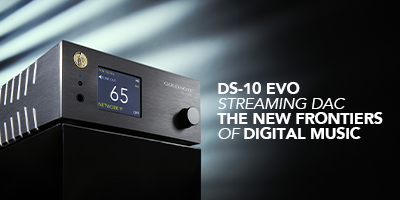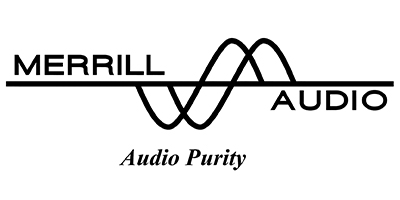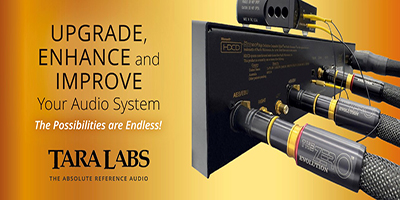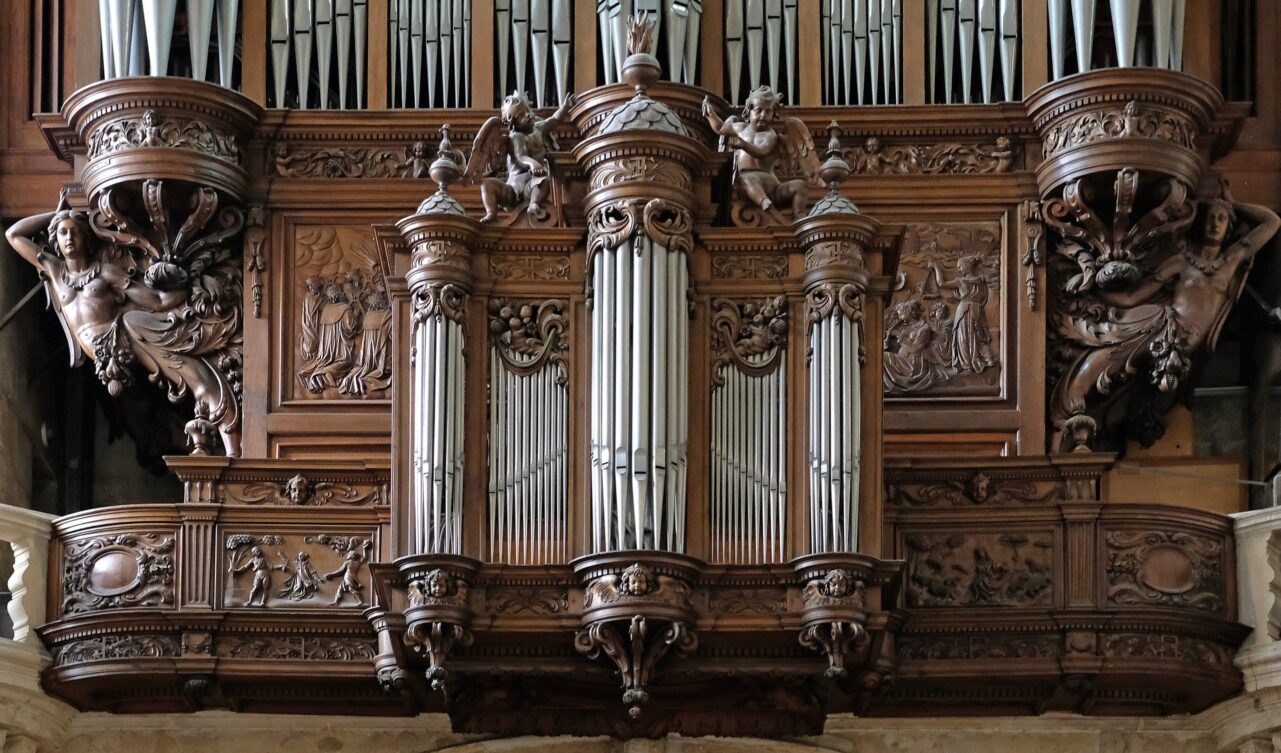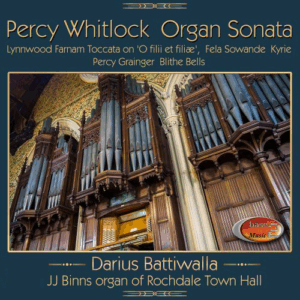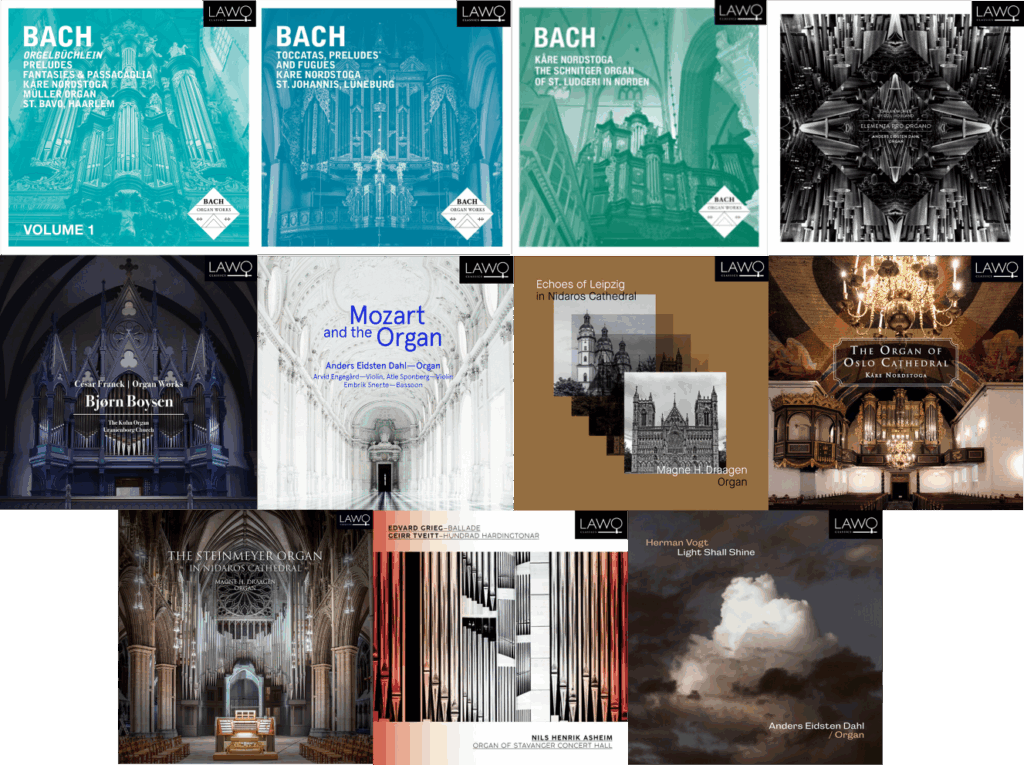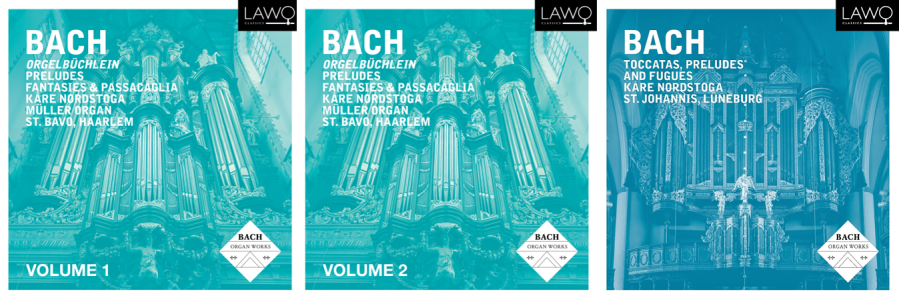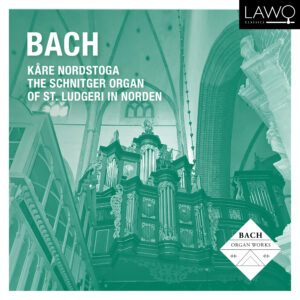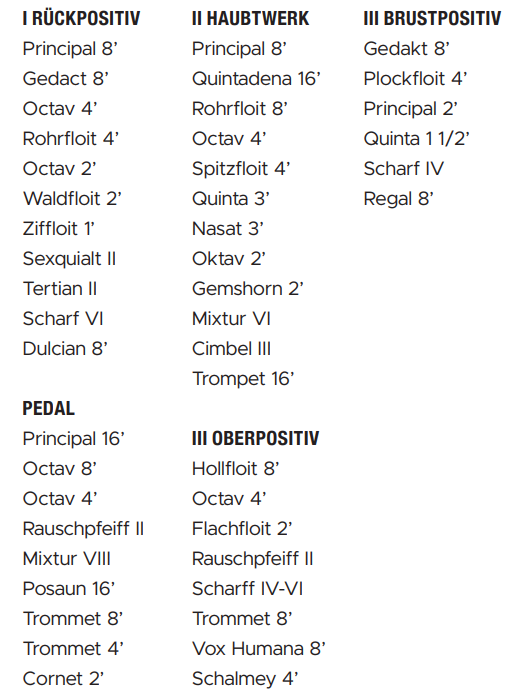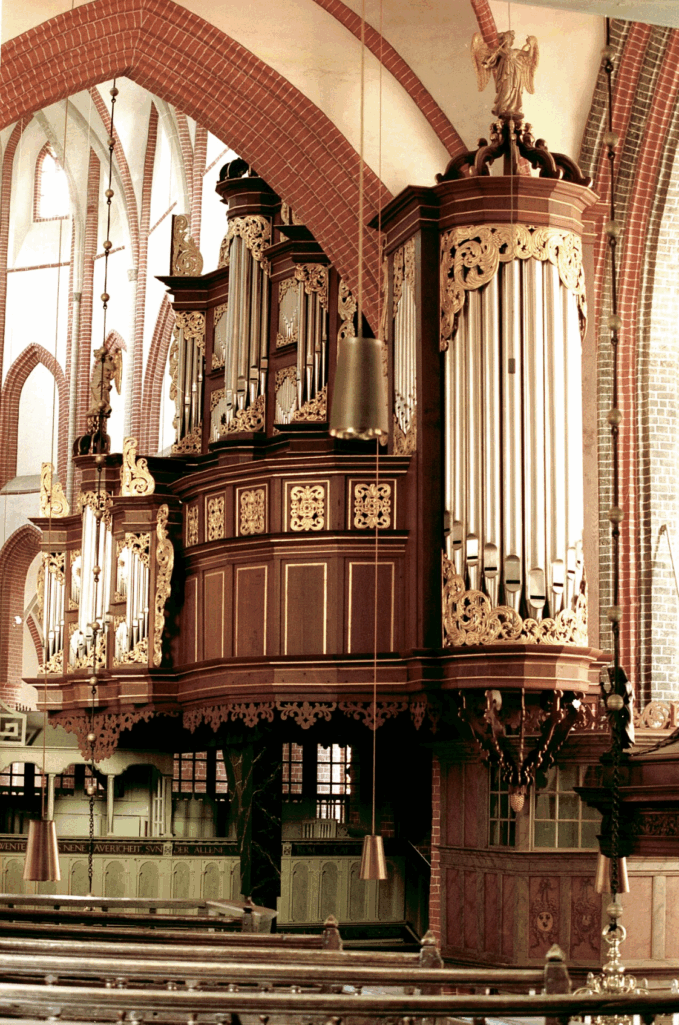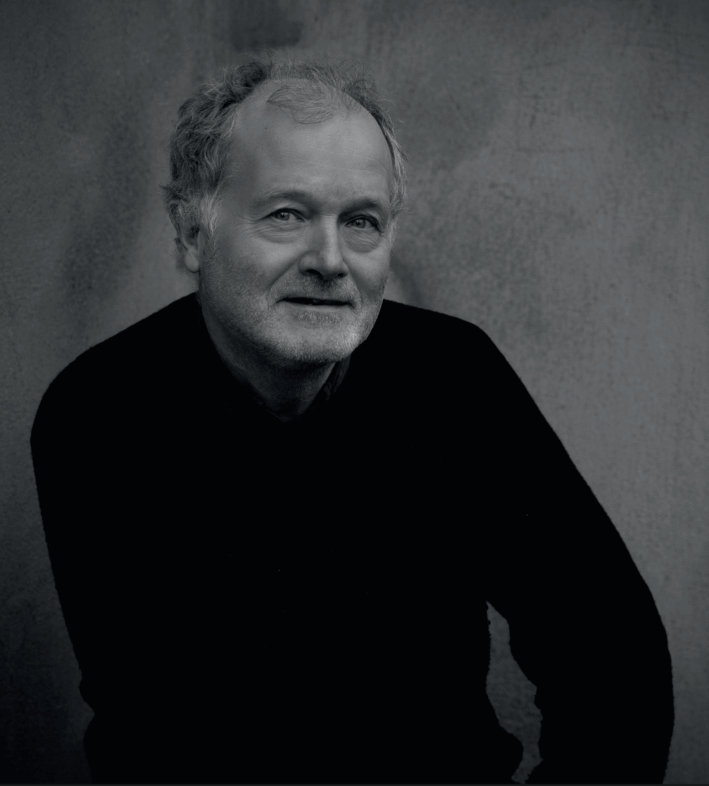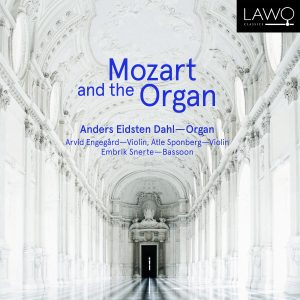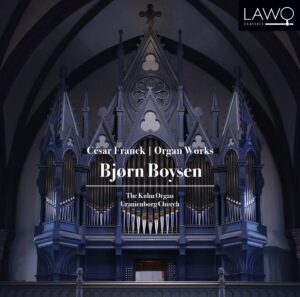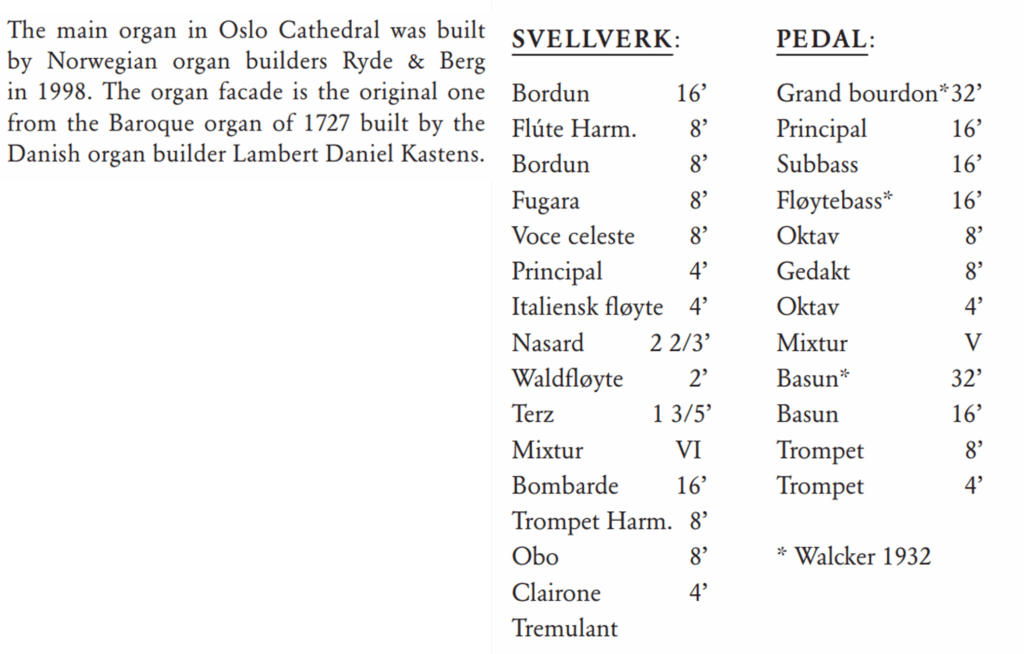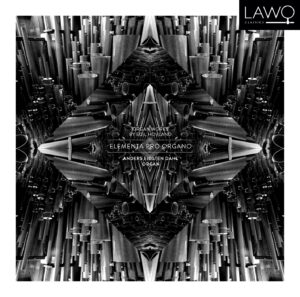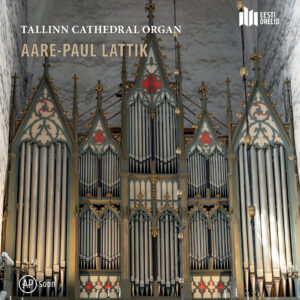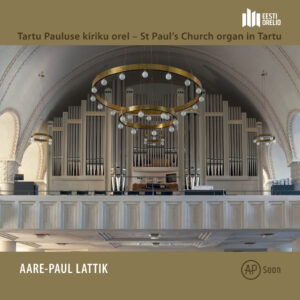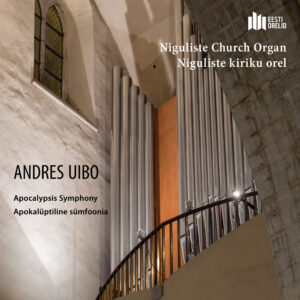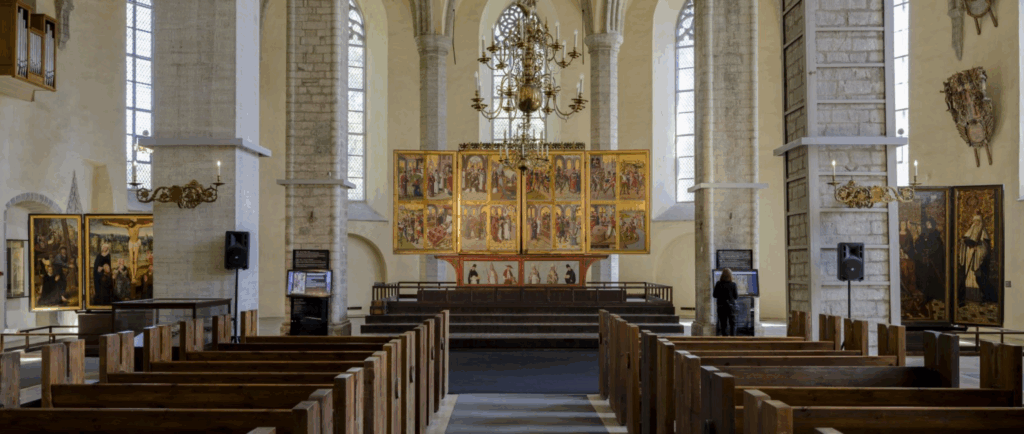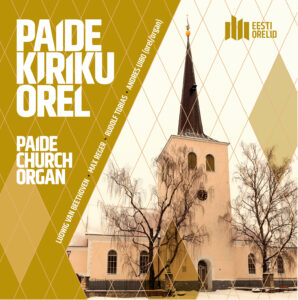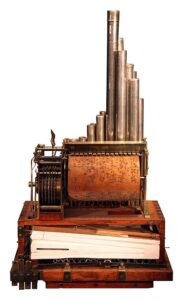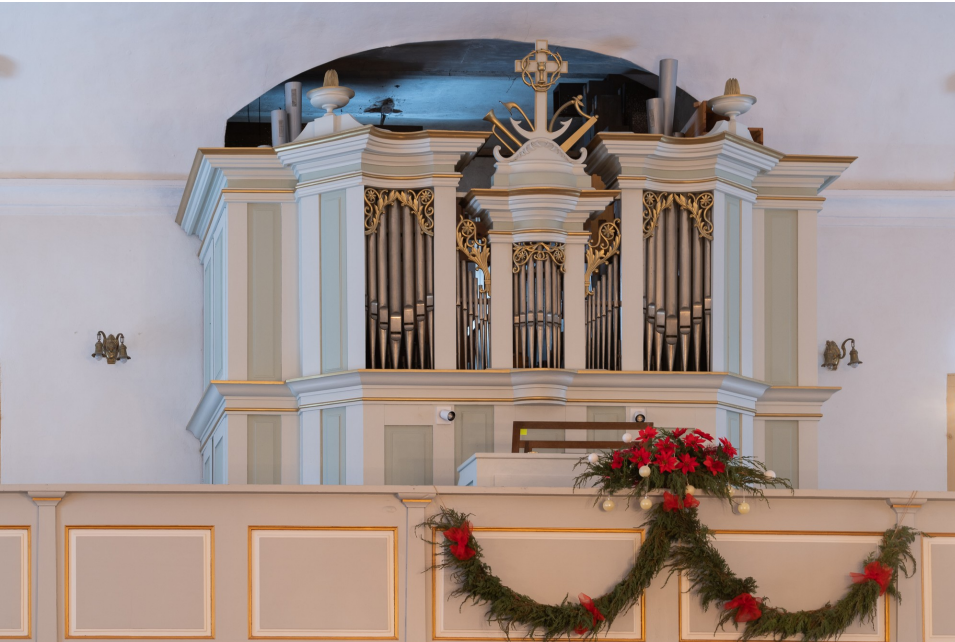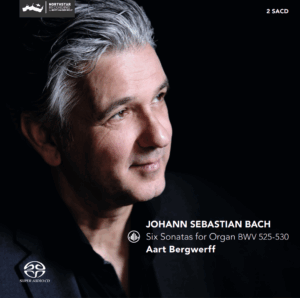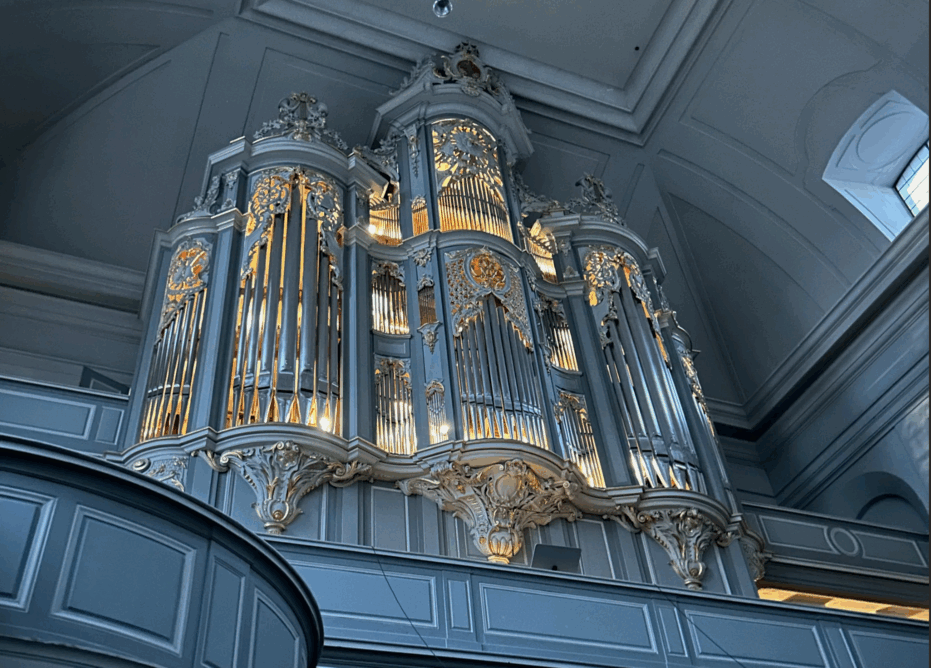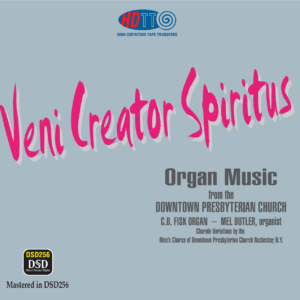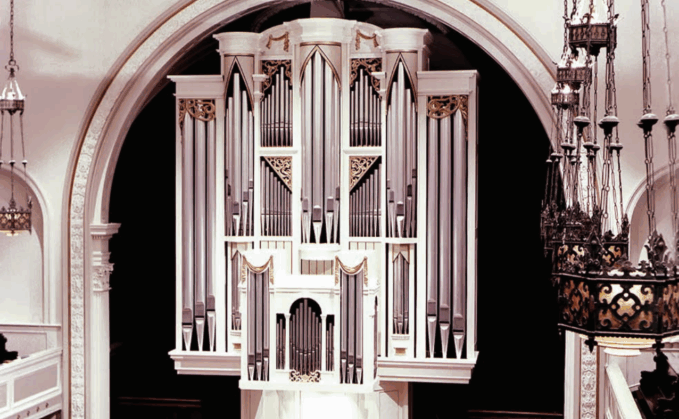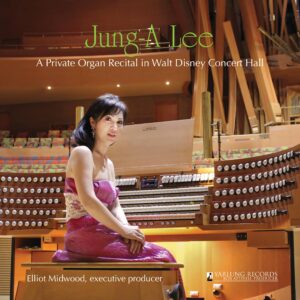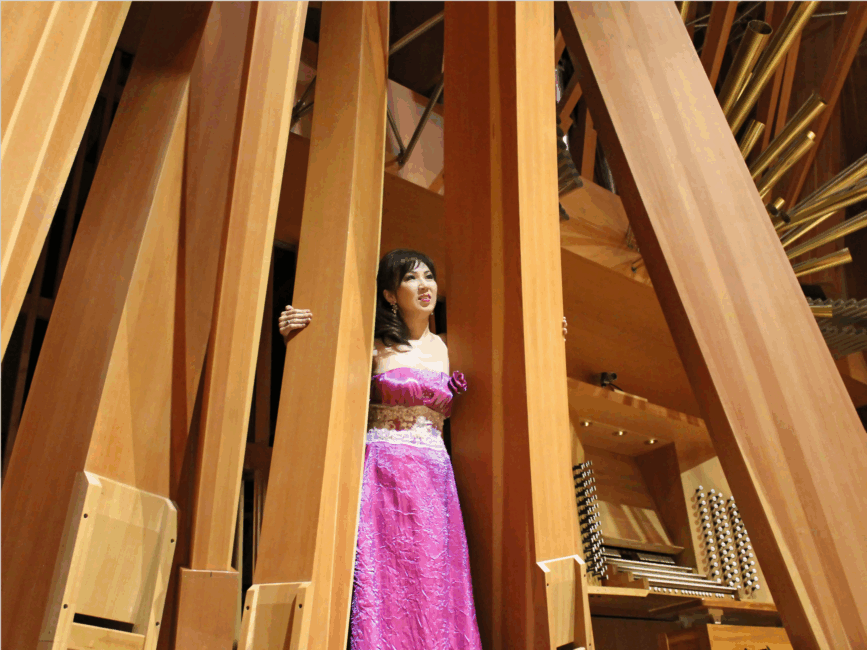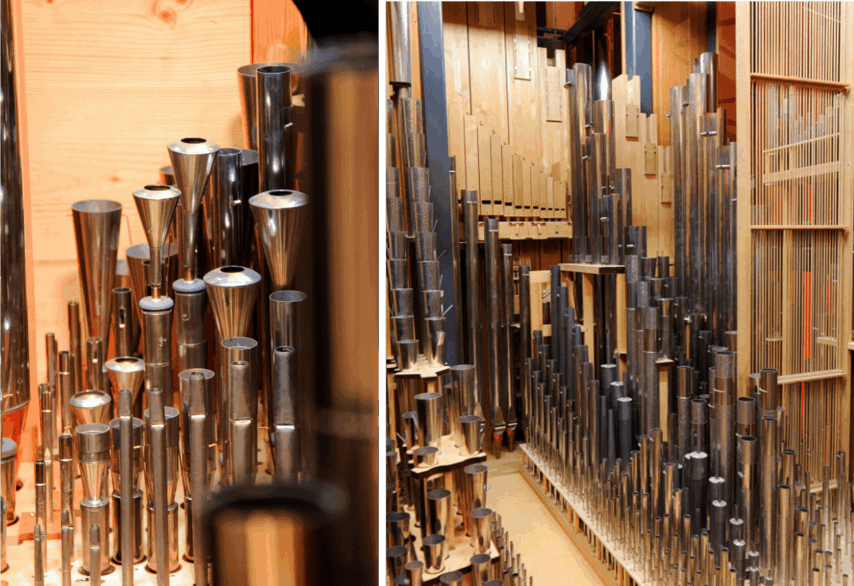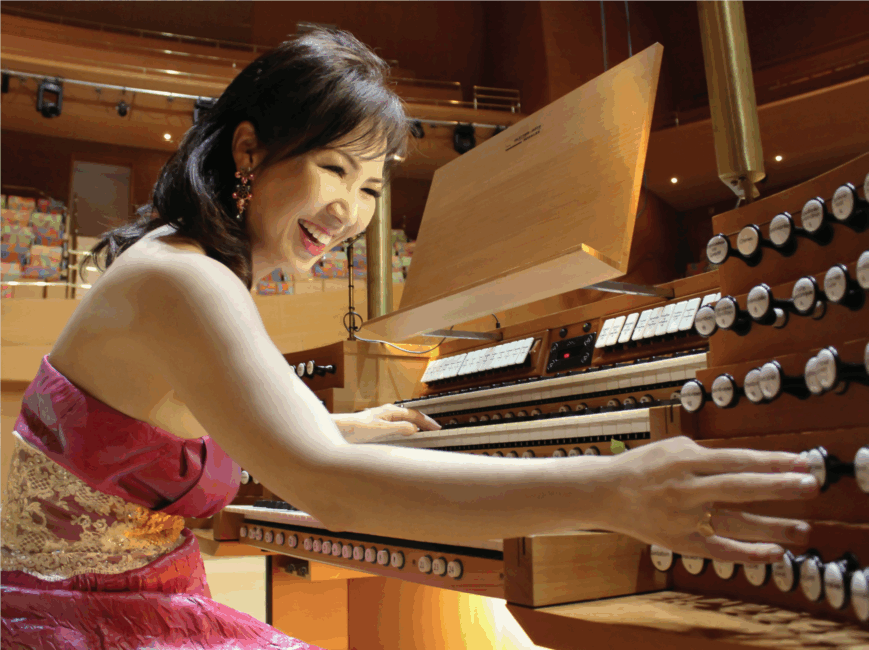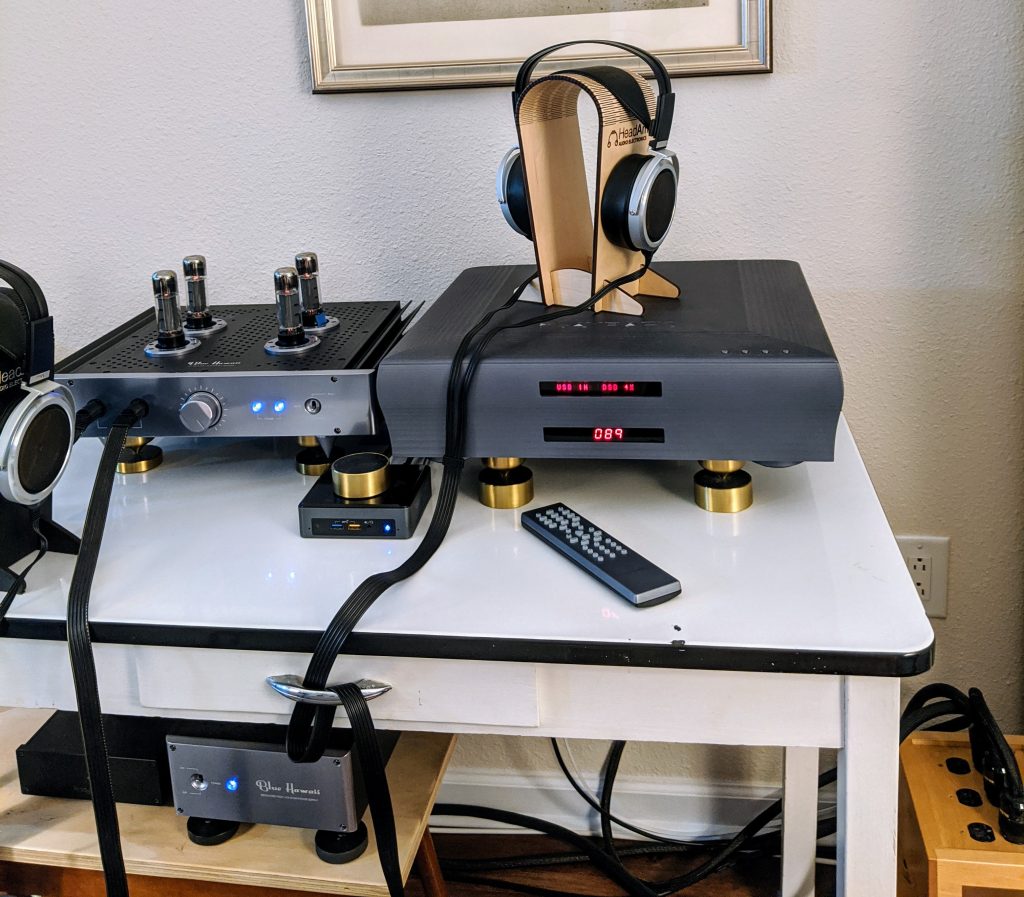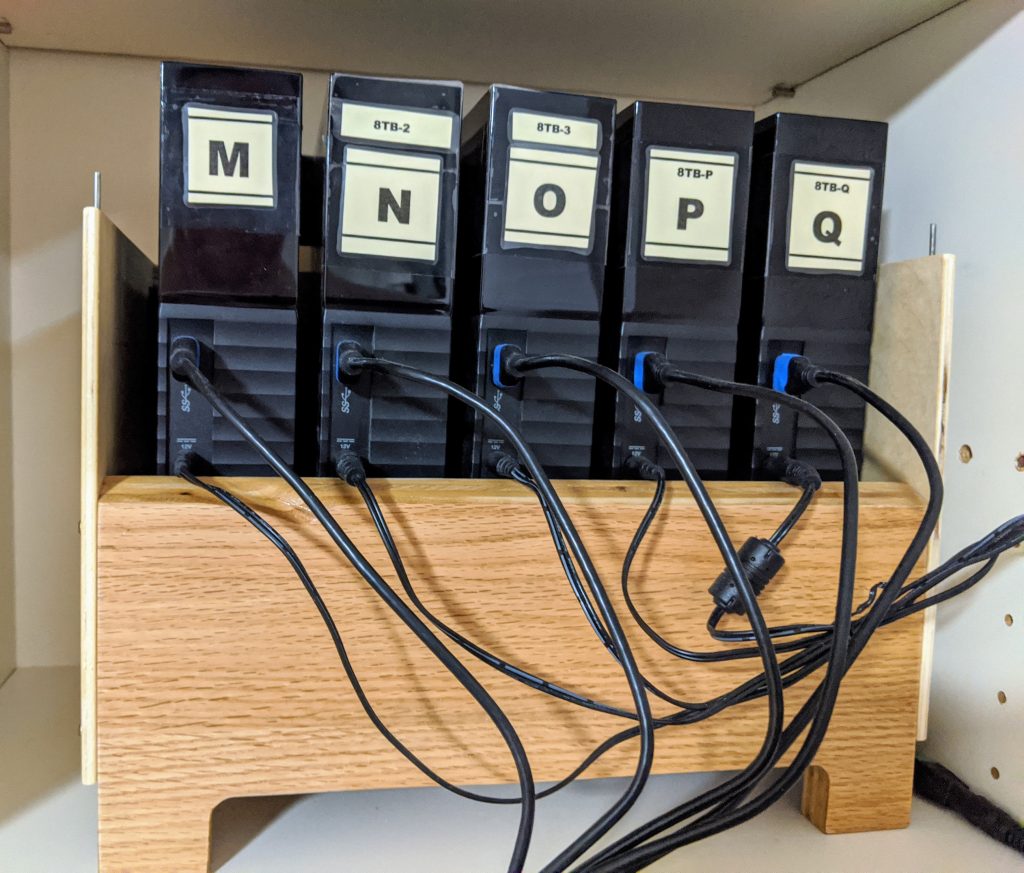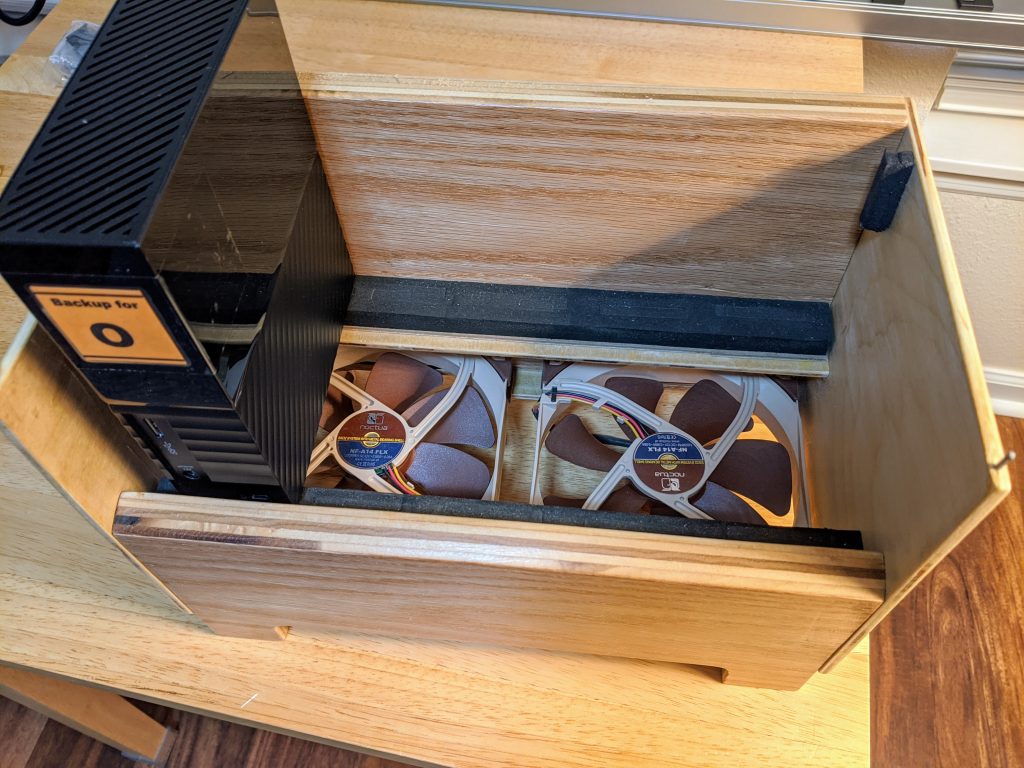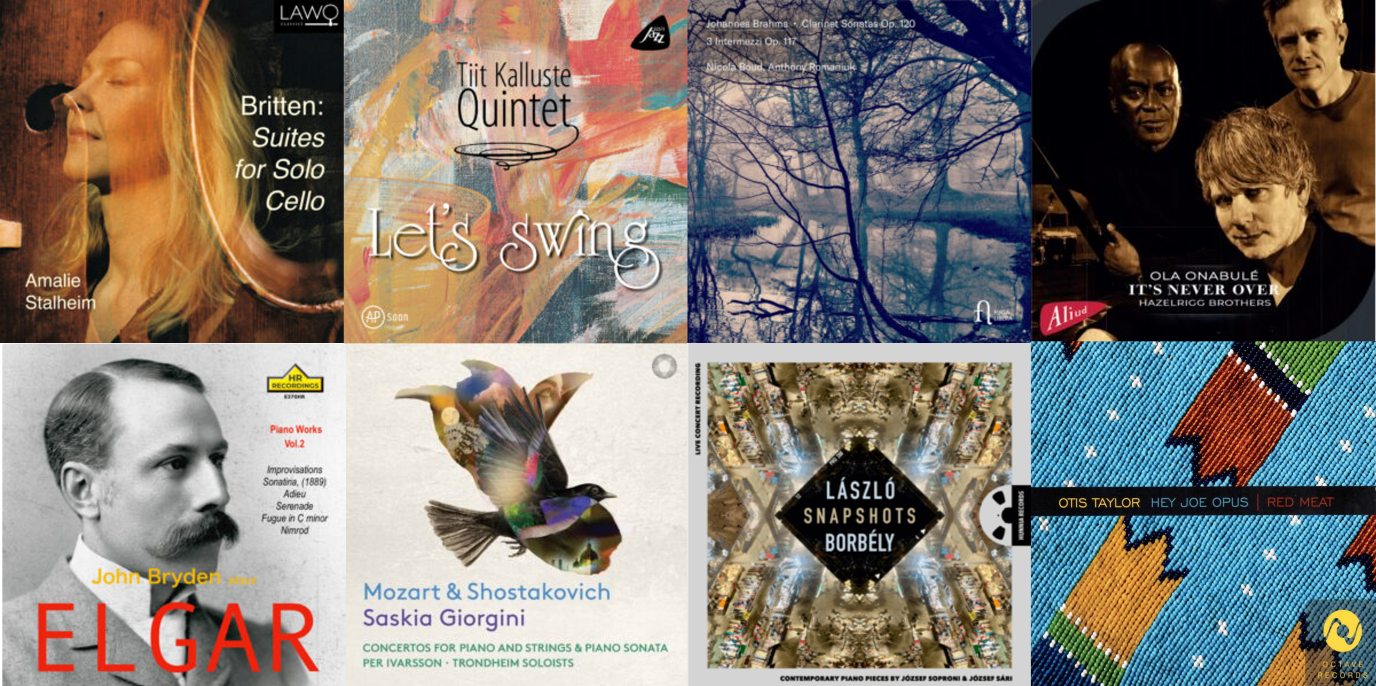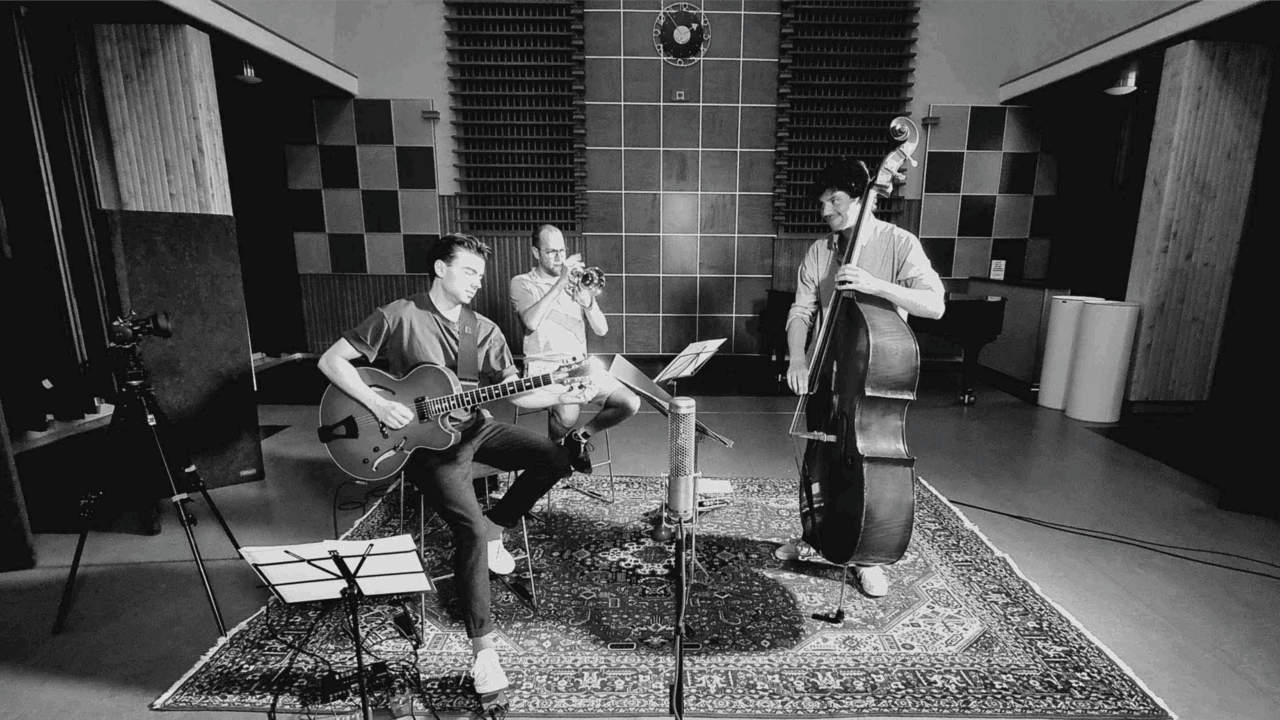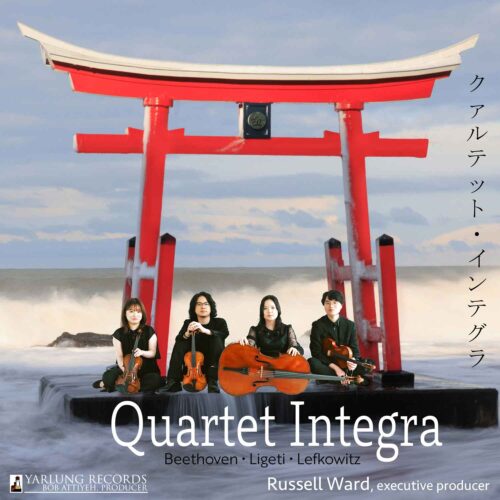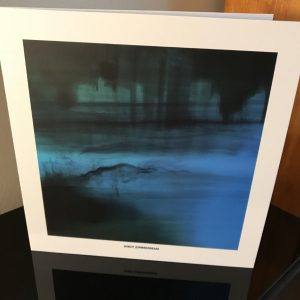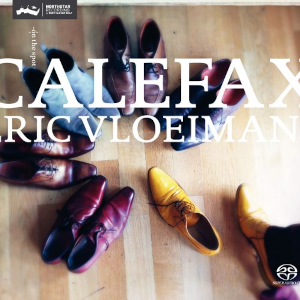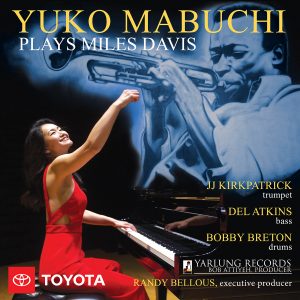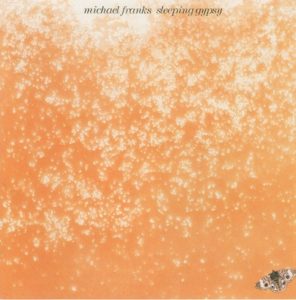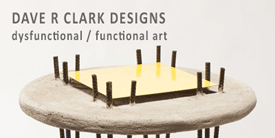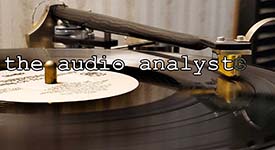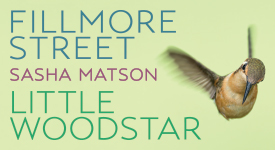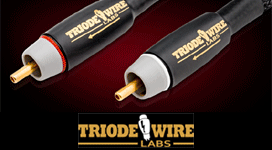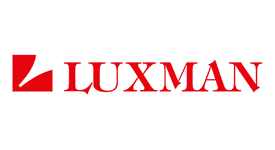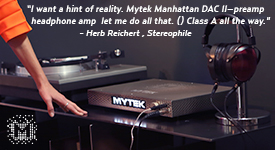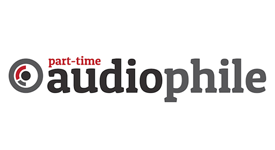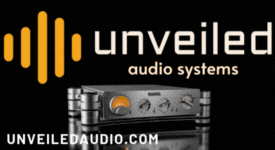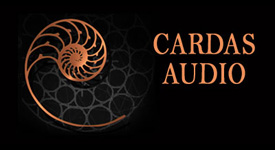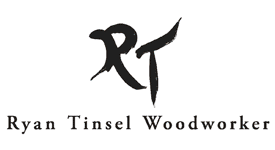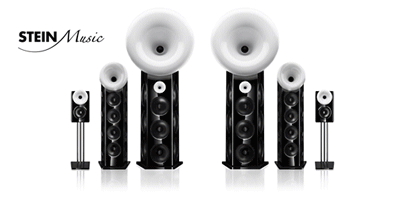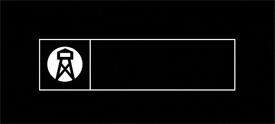Okay, I admit it. I love a good organ recording. In my vinyl days, I had shelves upon shelves of excellent organ recordings on LP. Today, my digital library is somewhat bereft. There are lots of organ albums on CD, but piffle. I want full resolution. If I can't have vinyl, then I want high definition digital. At least 96kHz and preferably DXD and DSD256 at original recording or transfer resolution. Not upsampled. So, where can one find hi-def digital organ music? It's hard. But in this article I will summarize what I've been able to find. Be forewarned, some of this will repeat from earlier articles over the past several years. But at least this will put everything together, organized first by label for those labels who have been committed to releasing organ recordings in high definition, then just by album.
Case of the organ of the tribune of Église Saint-Étienne-du-Mont, Paris, installed in 1633. Photo Creative Commons, cropped.
But first, let's level set. What do I look for in a good organ recording?
First, a great sounding organ—the instrument must have good sound in and of itself, and be installed in a good acoustic space that allows the organ to breathe and develop to its full harmonic capabilities.
Second, good balance between direct and reflected sound. Some organ recordings, in a reverberant space, sound distant and echoey. Others have clear, direct sound from the organ with little room sound. A great recording has a good balance between direct and reflected sound.
Third, music that aligns with the strengths of the organ. Don't go playing early Baroque music on an organ built for romantic music. E.g., give me a northern Europe Arp Schnitger organ with Buxtehude and a Cavaillé-Coll with Vierne and I feel a sympathetic match is in the making, but this is far from any sort of absolute rule. It's just a preference, often not achieved.
Base2 Music—Organ Recordings (click on image for larger size)
Jake Purches, owner of Base2 Music, makes gorgeous organ recordings. If you love large organs, you'll appreciate Jake's tastes. His recording style allows the instrument to breathe, with lots of air and ambiance from the natural acoustic space in which the organ lives. Ann sometimes complains of the organ sounding distant on one or another of his albums. Not me. I love it—I love to hear the surrounding space. I also love that Jake's recordings never sound congested due to peak overloads. I just turn my volume knob a bit higher on some of these where he's been (over) cautious.
Percy Whitlock Organ Sonata, Darius Battiwalla. Base2 Music 2021 (384kHz*, Stereo, MCh) Edit Master Sourced HERE
If you love deep bass, this is a recording that will test your audio system's abilities. Subwoofers will rejoice. And the music is great, too.
You can read my earlier reviews at the links below:
Organ Recordings from Base2 Music
Recent Finds No. 36 The NativeDSD Catalog Continues to Deliver Wonderful Recordings
Links to download these albums in high definition are contained in the review article. Pick any one of these albums and you will have an excellent recital on one of the great organs in Europe, superbly well recorded.
Lawo Classics, Organ Recordings (click on image for larger size)
Lawo Classics in Norway have released some outstanding organ recordings, capturing the sound of some of the great northern Europe instruments. Lawo make excellent sounding recordings of chamber music, choral music, and orchestral music in addition to their organ recordings, which tend to be a small but very high quality subset of their releases. Some of the music highlights modern Norwegian and north European composers, for which I am grateful. Several of the albums are by the great Norwegian organists Kåre Nordstoga and Anders Eidsten Dahl, who are both terrific. The organs are all in wonderful condition and sound stunning.
All of the Lawo Classics organ albums were recorded and mastered by Thomas Wolden, who is among the top 10 classical music recording engineers working today. Every recording on which you find his name credited will be sonically superb. I have not written reviews for all of these Lawo organ releases, The reviews contained in the earlier articles to which I've provided links below will give you a sense of what to expect. And, I've added a few new reviews below, brief though they may be. I recommend any of these Lawo Classics organ recordings without reservation—choose based on the music and composer you want to hear.
I will not be able to offer a comment about every Lawo organ album; there is just not enough room to cover so many. I will try to capture a bunch of them, however. For the others, I encourage you to peruse the entire list of Lawo organ recordings a the following link:
Link to find all of the Lawo Classic organ recordings at NativeDSD
J.S. Bach Orgelbüchlein, Volumes 1 & 2, Kåre Nordstoga. Lawo Classics 2021 (DXD, Stereo) Edit Master Sourced HERE and HERE (and also as a bundle HERE)
J.S. Bach Toccatas, Preludes and Fugues, Kåre Nordstoga. Lawo Classics 2019 (DXD, Stereo, MCh) Edit Master Sourced HERE
The albums above are the first three in what we can only hope will be an ongoing cycle of the works by J.S. Bach for organ. You can read my earlier review of these three albums HERE.
Bach, The Schnitger Organ of St. Ludgeri in Norden, Kåre Nordstoga. Lawo Classics 2025 (32bit DXD, Stereo) HERE
This is the fourth, and most recent, album in the cycle of J.S. Bach organ works performed by Kåre Nordstoga. We shift organs once again, this time to the great Arp Schnitger Organ in St. Ludgeri Church, Norden, Germany. This is perhaps my favorite sounding organ for playing the music of Bach. Its sound is direct, precise, agile, yet with tremendous power from its 16' pipes. And Nordstoga performs these works superbly with excellent decisions about registration.
The final track on the album, Prelude (Toccata) and Fugue in C Major BWV 566a: II. Fugue 2, should knock your socks off.
Originally built between 1686 and 1692 by Arp Schnitger, with 46 stops, 5 divisions, three manuals, and pedals, it is the second largest preserved Schnitger organ in Germany. And, certainly, the organ has undergone several restorations throughout its history, the most recent being by Jürgen Ahrend from 1981 to 1985 with outstanding results. And, yes, this organ uses mechanical action, commonly referred to as a "tracker" organ. For those keen about such information, the enclosed booklet lists the complement of pipes as:
The Schnitger Organ of St. Ludgeri in Norden. Photo Creative Commons
Following his debut concert in 1978, Kåre Nordstoga continued studies under David Sanger in London, and he was for a time organist at Ullern Church, before coming to Oslo Cathedral in 1984 where he continued as cathedral organist until his retirement at the end of 2024. He continues to follow an active schedule as a concert organist. My hope is that he will continue recording this cycle of Bach's music with Lawo Classics and give us many more marvelous albums like this one.
Kåre Nordstoga (b. 1954)
Mozart and the Organ, Anders Eidsten Dahl. Lawo Classics 2023 (32bit DXD, Stereo) Edit Master Sourced HERE
An outstanding recording in which Mozart combines organ and violin and bassoon in various compositions for organ. Read my earlier review HERE.
Cesar Franck Organ Works, Bjørn Boysen. Lawo Classics 2018 (DXD, Stereo) Edit Master Sourced HERE
Organist Bjørn Boysen has been a recitalist since his debut in 1966 and has taught organ, first at the Music Conservatory in Oslo from 1966, and then at the Norwegian Academy of Music from its opening in 1973 until he retired in 2014. He is considered to be one of Norway's leading recital organists, and this recording of works by Cesar Franck will tell you why. The organ on which he plays is perfectly suited to the music of Franck: the Steinmeyer organ in Nidaros cathedral as restored by the firm Orgelbau Kuhn of Switzerland in 2009.
Of the restored instrument, Boysen writes, "I had been toying with the idea of recording Franck's organ works for some years and had had in mind an instrument maintained in an uncompromising, French symphonic style. As I gradually played my way through the repertoire, however, I realized that it would not be easy to find a Cavaillé-Coll copy that would meet the demands of Franck's music as well as the organ at Uranienborg did. Here I found a clarinet on the Ryggpositiv that could be used as a solo stop accompanied by full swell in the Grande Pièce Symphonique. There are flutes that balance full swell in the Final; a beautiful, singing tone in the foundation stops, and an impressive tutti. I do perhaps miss having French pedal reeds, the sound is sometimes a little too rounded. Neither is the flute on the Great overblowing as it would be in the French tradition, but what does that matter when it makes such a lovely sound?"
This album fits all three criteria I look for in a good recording: a great sounding organ; good balance between direct and reflected sound; and sympathetic match between music being performed and the sound of the organ. Cesar Franck on a Norwegian organ restored by a Swiss organ firm, who would have thought it? But it is all terrific, and the performances by organist Bjørn Boysen are top drawer by any standard.
This is one of the very few albums from Lawo not engineered by Thomas Wolden, but the sound quality from engineer Arne Akselsberg is superb, staying very much within the high standard set.
The Organ of Oslo Cathedral, Kåre Nordstoga. Lawo Classics 2016 (DXD, Stereo, MCh) Edit Master Sourced HERE
This album's opening track is as nice a performance and recording of J.S. Bach's great Toccata & Fugue In D Minor, BWV 565, as I can recommend. Particularly if you prefer, as I do, performance on an organ that Bach may himself have recognized for its sound. The remaining works are by Edvard Grieg (Holberg Suite), Arild Sandvold, Oskar Lindberg, Max Reger (Chorale Fantasia "Wie schön leucht? uns der Morgenstern", Op. 40, No. 1), Charles Gounod, and a traditional piece. This is a richly varied album, showing off the full breadth of this organ. And, boy!, does it sound marvelous.
The main organ, heard here, was built by Norwegian organ builders Ryde & Berg in 1998. It is based on the spirit of the great northern European tradition of all-mechanical action, as found in the Arp Schnitger organs of late 17th to early 18th century design. The pipes of the original organ of 1727 (made by Danish organ builder Lambert Daniel Kastens who studied and worked with Arp Schnitger) vanished long ago, with multiple different organs residing behind the original facade. And, while the current organ is a thoroughly 20th century construction, its tonal profile is inspired by classical models, and both the action and stop action are fully mechanical, with additional slider motors and digital combination system to allow for greater flexibility.
Don't mistake this organ for a small organ, it may have mechanical action but it is powerful. It's six 16' pipe and two 32' pipes are all put to excellent use in the registration of these works by organist Kåre Nordstoga. Listen to Reger's Chorale Fantasia for a good taste of the power and depth this organ generates in the right hands. Those of you with full range frequency response audio systems will give your system a nice workout.
Kåre Nordstoga has been the cathedral organist of Oslo Cathedral since 1984 and professor at the Norwegian Academy of Music since 1994. His recordings of organ music by J.S. Bach for Lawo Classics are very fine and highly recommended, as is this album.
Elementa Pro Organo (music of Egil Hovland), Anders Eidsten Dahl. Lawo Classics 2014 (DXD, Stereo, MCh) Edit Master Sourced HERE
This album is entirely the music for organ of the great 20th century Norwegian composer Egil Hovland (1924-2014). Over the course of his long career, he traversed numerous styles, from traditional hymns to very modern experimental music. In addition to vast number of hymns for church services, he composed larger works for orchestra, chamber ensemble, choir, and organ. He is one of the most prolific composers Norway has given us.
This album explores the broad variety of Egil Hovland's works for organ. It opens with his Koralpartita nr. 1, opus 7 (1947), a work that follows the strict Renaissance rules for vocal polyphony, in the purified, refined style, and ascetic ideals, represented most importantly by Palestrina.
And then it shifts, dramatically, with his radically modernist Elementa Pro Organo, opus 52 (1965/66). As the author of the liner notes writes, "Arnold Schönberg's twelve-tone style with its tonal freedom breached the church door, as did the neo-expressionism pioneered by Krzysztof Penderecki." Quite a shock this work must have been when first heard in a concert during the Nordic Church Music Days in Oslo on 22 June 1965.
The remaining pieces are less modernist, many dating from that later period in his life when Hovland the experimentalist made what Hovland himself called an about-turn. He told university students in 1974: "Towards the 1970s I reverted to a Romantic or neo-friendly style."
I include this album for your attention because it presents a 20th century composer who was a master of the organ and who both stretched the boundaries of organ performance to experimental modernist explorations but also composed works that are comfortably within a traditional mainstream of practice. And, he is a composer you may not know of, but with whom you should become acquainted.
The organ here is the main organ of Bragernes Church, a parish church at Drammen in Buskerud county, Norway, built by Carsten Lund Organ Builders of Copenhagen in 1998.
As usual, recording engineer Thomas Wolden has captured a very nice balance of direct and reflected sound, allowing the recorded sound of the organ to fill the surrounding acoustic space and bloom nicely. This is not an overpowering "grand statement" organ, but it has very nice tonality with more than adequate frequency extension, dynamics, and power (with it's 32' Bordon and multiple 16' pipes) to match nicely with Hovland's compositions.
APSoon Recordings—Organ Recordings (click on image for larger size)
APSoon is an Estonian label making some very nice recordings. Recording in DSD256 using very much state-of-the-art recording technology* and inviting organists from all over the world, APSoon aims to record the sound of the organs in Estonian Churches and release them in Pure DSD Stereo at NativeDSD. So far, APSoon recording engineers Aular Soon and Priit Kuulberg are off to a great start with these first four releases. The organs sound very different each from the other, we have two different and excellent organists delivering very nice performances, and all releases are supremely well recorded.
Tallinn Cathedral Organ, Aare-Paul Lattik. APSoon Recordings 2024 (Pure DSD256, Stereo) HERE
Perhaps my favorite composers of large scale organ music is the French composer and organist Maurice Duruflé (1902-1986). So, I was delighted to find the opening work on this album to be his Prélude, Adagio and Choral variations, op. 4—a marvelous work. Complex, subtle, never bombastic, endlessly inventive, and gloriously powerful in its forte sections. It is performed by organist Aare-Paul Lattik with great clarity and directness, a real pleasure to experience.
At a bit longer than 21-minutes, the Duruflé Opus 4 is the primary work on this album. And it is so very good that I would have been happy if the album were just an extended play album with this work alone. But, happily, Lattik couples the Duruflé with three shorter works by Gabriel Pierné (1863-1937), Jules Grison (1842-1896), and one of his own compositions, Revaler Totentanz (1970). Each is a fine composition for organ that further explores the capabilities of this excellent organ.
The Tallinn Cathedral Organ (of St. Mary's Cathedral, Tallinn, Estonia) was originally built by the 19th-century German organ builder Frederich Ladegast, installed in 1878. In 1938 the renowned organ builder Wilhelm Sauer of Frankfurt was engaged to extend and modernize the organ. A new electropneumatic action (then popular) was installed, and additional stops and mixtures were added, to bring the organ to today's 71 stops and over 4,500 pipes. In 1998, the organ was restored with a thorough cleaning of the pipes, replacement of leather membranes in the pipes and bellows, and tuning to preserve the typical sound characteristics of Ladegast and Sauer.
This recording captures the spacious sound of the church in which it is situated while providing very clear direct sound from the organ, with excellent reproduction of deep bass and extended high frequencies. A very nice recording that well captures an excellent recital by Aare-Paul Lattik.
I certainly hope APSoon is able to release another album with Aare-Paul Lattik in the near future.
St. Paul's Church Organ In Tartu, Aare-Paul Lattik. APSoon Recordings 2023 (Pure DSD256, Stereo) HERE
St. Paul's Church Organ in Tartu is a modern organ built in 2015 by the German company Paschen Kiel Orgelbau GmbH. It is capable of deep resonant bass but overall it has a very "clean" sound—very direct, open, and clear. While it is voiced in more of the romantic tradition, it does not have the abundance of harmonic overtones that make some other organs sound "fuzzy" and indistinct. Here, the central pitch is very clear. And that makes this organ distinctive, very responsive, and almost lithe.
And yet, performances of the big French works contained on this album (by Duruflé, Dallier, Ropartz, and Franck) sound very French, indeed.
So sounds this remarkably agile and adaptable organ, as well.
No, this is decidedly not a Cavaille-Coll organ. It does not have that distinct nasal sound of the French reeds. But, the registration selected by organist Aare-Paul Lattik subtly allows for enough other characteristics of romantic French organs to allow one to simply lean back and enjoy the recital of this large scale French organ music—to suspend disbelief if you will. Just listen to the Franck Final, op. 21, that concludes the album.
I'm impressed. And I am impressed by the musical sensibilities and performance of organist Aare-Paul Lattik. As already mentioned, it is, perhaps, his playing and his choice of registration to which I am reacting so positively as I listen to this album. Very nicely done.
Niguliste Church Organ, Andres Uibo. APSoon Recordings 2022 (Pure DSD256, Stereo) HERE
Andres Uibo returns in this second release in the series of Estonian church organs to perform a selection of his own compositions. The organ is that of the Niguliste Museum Concert Hall in Tallinn, Estonia, where Uibo has been the organist since 1981. The museum is housed in St. Nicholas' Church, built in the 13th century, and is one of the few museums in northern Europe located in a former church building. The Niguliste Museum preserves, studies and presents medieval and early modern ecclesiastical art.
The main organ with 4 manuals, pedal keyboard as well as 63 registers and 4711 pipes was built by the Czech organ manufacturer Rieger-Kloss and was installed in the museum concert hall in December 1981.
Andres Uibo performs his four movement Apocalysis Symphony (2003-2004) and then his earlier Three Choral Meditations (1993), both subtle compositions where the quiet parts are really very softly played and the loud sections thunderous. The works are not show-off pieces, so don't expect large scale fireworks. Instead, they demonstrate very nicely the more subtle and delicate tonalities and sound combinations of which this very large organ is capable.
APSoon does an excellent job of capturing the beautiful ambiance and reverberation of this 13th Century interior while getting an excellent balance of direct sound. It is a wonderful recording for those who enjoy the delicacy and sonic complexity of which a really good organ is capable.
13th Century Church Housing the Niguliste Museum Concert Hall in Tallinn, Estonia
Paide Church Organ, Andres Uibo. APSoon Recordings 2022 (Pure DSD256, Stereo) HERE
This album is the first release in the series of organ recordings APSoon plans. Recorded on September 2, 2021 in the Holy Cross Church in Paide, Estonia, the sound of the organ is gentle overall, with an overall roundness of tone and slight softness of color that is comfortable to hear. Yet, it is an organ not to be underestimated. Built in 1933 by the J.J.T. Kriisaand, and expanded to its final planned design in 2017 with the addition of three additional registers, the organ is fully a concert organ in its finished state as we hear it in this album. It uses a pneumatic action, common at the time of it's design. Organist Andres Uibo writes of this action: "...this makes the keys light to the touch when playing, but at the same time results in a slight delay before the sound is heard."
The album opens with Beethoven's Pieces for Mechanical Clock WoO 33, a work discovered after Beethoven's death with some uncertainty as to the instrument for which they were written. A likely guess is that at least the first three were intended for a mechanical clock and completed by 1800 for an exhibition of waxworks and musical automata displayed by Count Josef Deym. But this is not definitive. The work opens with a bright and bouncy theme, but also a sense of elegance. The pieces are short and rather fun.
The mechanical clock in question was likely a "flötenuhr" as known in Vienna, and for which Mozart wrote a small masterpiece. There were a variety of configurations using flutes or small pipes with attached bellows, as displayed in the collection of the Technik Museum Speyer HERE. Or as show in this WikiCommons image below, but with a clock face as well:
Mechanical organ by Davrainville, 1819, held in the collection of the Conservatoire national des Arts et Métiers in France. Click for larger image. Photo Creative Commons
The album then moves into some more serious music for organ with Choral preludes for organ by Rudolf Tobias (1873–1918) and Max Reger (1873–1916). These works contain challenges which the organ, and organist, accommodate very nicely.
As organist Andres Uibo observes in the liner notes, "The harmonious balance between the Kriisa organ and the acoustics of Paide church results in a truly superb sound. The tone of the organ is strong and beautiful; the violonbass (violone) register in the pedal is spread wide, as is the principal (open diapason), imparting a solid foundation to the overall sound. Kessler's treble mix in the main manual and the cornet in the second manual, which utilises the pipes of the principal register with the aid of a super-octave coupler, add plenty of sparkle to the organ's sound... In terms of its sound, the organ in Paide church may well be considered to be one of the finest Kriisa organs in Estonia."
Kriisa organ in Holy Cross Church, Paide, Estonia, retaining the casework from the earlier 19th-century organ.
Altogether, this is a very pleasant, enjoyable organ recital of a little under 45 minutes. As the first album in this series, it offers a nice introduction to what will be coming in succeeding albums. The APSoon team achieve a nice balance of sound in this first recording, but greater delights are to come with each succeeding release.
* Recording technology being used by the APSoon team: B&K 4006, Sonodore RCM 402, LDM 54, MPM 81, and Josephson C700A (beginning with the third album) microphones; Rens Heijnis 8 MS battery powered preamp; and Merging Technologies' Horus Analog to D/A Converter to Stereo DSD256.
Bert van der Wolf-Oude Avenhuis with Organist Aart Bergwerff
Those of you who may have read some of my other articles have no doubt encountered my enthusiasm for recordings made by Bert van der Wolf-Oude Avenhuis, Northstar Recording Services. Bert tells me that he's always wanted to record organs, particularly with the process he's developed for capturing full immersion surround sound. He's just never had the opportunity. Until now.
Bach, Six Sonatas for Organ BWV 525-530, Aart Bergwerff. Challenge Classics | Northstar Recordings 2024 (DXD, DSD256, Stereo, MCh, Binaural) HERE
The Triosonatas, BWV 525-530 by Johann Sebastian Bach are some of my favorite works for organ. I came to them through the marvelous Archiv LP (2533 126, 1973) recorded in 1969 by the great Helmut Walcha (1907-1991). I've no doubt imprinted on those performances and the sound of the Silberman organ Walcha played to the extent that very little has sounded as good to my ears over the years since.
But here is a modern recording I am more than happy to recommend. Winner of the First Quarter 2025 German Record Critics Award as a recording of exceptional artistry, I can only add: oh, yes indeed.
The performance by Aart Bergwerff is musical and very articulate (as it needs to be) without being in the least mechanical. His selection of the organ registers nicely suits these pieces allowing the necessary agility and precision of touch, never overpowering them. And he gets the tempi just right for my tastes. Fresh and alert where required, and caressing when called for.
The balance of direct and reflected sound is well judged, with just a small nit. I am listening to the stereo release, and sometimes when a recording is made with the intention of being optimized for surround sound (as in this case), the two channels stereo mix can be a bit problematic. What I'm hearing in the stereo release is a bit more of the reverberant sound field than would be my preference. But, given such a large open space as that in which this organ resides, and it being entirely empty during recording, the sound field may be exactly what listeners in the church may have heard during this recording. It's just not my preferred balance for listening in stereo (and via headphones). This is virtually never something I hear in Bert's other recordings of ensembles, so I'm chalking this up to a first really nice effort getting back into recording an organ. I hope he can give us another organ recording project soon.
Wiegleb Organ (1739) St. Gumbertuskirche, Ansbach
And for those, like me, who just love perusing the complement of pipes in any given organ, here's the specification:
High Definition Tape Transfers
Veni Creator Spiritus, Mel Butler, organist, C. B. Fisk organ of the Downtown Presbyterian Church, Rochester, NY. HDTT 2016 (Pure DSD256, Stereo) HERE and HERE
I am so pleased to be able to include a recording performed on an American C. B. Fisk tracker organ in this survey of outstanding organ recordings. Recording engineer John Proffit made this recording in 1985 to 2-track 15ips analog tape. HDTT transferred this downloadable file from the 15ips tape in Pure DSD256. No PCM processing was used. What we thus have is a DSD256 file that is as transparently true to the 15ips tape as can be obtained. As you may have read me say before, neither Dr. David nor I can reliably hear any difference between a 15ips tape and the DSD256 recording made from it, given a good A/D converter and high quality, sonically transparent, electronics in the comparison.
The C. B. Fisk organ company of Gloucester, Massachusetts, was founded by Charles Fisk (1925-1983) in 1955. He soon became known for his restorations of antique American organs, as well as for his own fine tracker organs. He completed an impressive list of well known instruments, including the organs in King's Chapel in Boston (Opus 44), the first three-manual tracker organ to be built in America in the 20th century; Memorial Church at Harvard University (Opus 46); Old West Church, Boston (Opus 55); Wellesley College (Opus 72); House of Hope Presbyterian Church, St. Paul Minnesota (Opus 78).
The main organ in the Downtown Presbyterian Church sanctuary, Opus 83, was installed in 1982. It is a three-manual, tracker-action instrument consisting of 39 stops, 56 ranks, and 2,625 pipes. At the time it was built, it was the largest mechanical action organ in western New York State.
The Fisk Organ in Downtown Presbyterian Church as shown on an different album cover.
Yarlung Records
A Private Organ Recital in Walt Disney Concert Hall, Jung-A Lee. Yarlung Records 2018 (Pure DSD256, Stereo, MCh) HERE
The organ in Walt Disney Concert Hall is a massive assault on creating one of the most capable, authoritative, dynamic, and powerful organs ever assembled. The organ was a gift from Toyota Motor Sales USA, and includes 6,134 pipes ranging in size from 32 feet to a few inches. These pipes are in 109 ranks, or sets. Architect Frank Gehry and organ designer and builder Manuel Rosales collaborated on the visual design.
Glatter-Götz Orgelbau in Owingen, Germany, and Rosales Organ Builders in Los Angeles created the mechanical design, construction, tuning and voicing. The organ was shipped from Germany in six ocean-going containers and the unassembled organ itself weighed over 40 metric tons. Installation by the Glatter-Götz staff in WDCH began in April 2003 and was completed in June 2003. Designer Manuel Rosales and his Los Angeles team voiced the 6134 pipes over a period of one year and completed the project in 2004.
The keys on the main console are connected to the pipe valves via a mechanical linkage known as "tracker action." Both consoles are equipped with electric action, which may be digitally recorded for playback and archival purposes. Wind for the organ is supplied by three blowers totaling 14.5 horsepower. Wind pressures range from 4" (102mm) for the Positive to 18" (380mm) for the Llamada horizontal "Tuba" and 32' Contra Bombarde.
The length of the longest pipes is over 32 feet and the largest pipe weighs over 1000 lbs. The smallest pipe is the size of a small pencil with a speaking length less than 1/4" long. The lowest note has a frequency of 16 cycles per second, which is C below the lowest note on a modern Steinway. The highest note has a fundamental frequency of 10,548 cycles per second, which is an octave and a third higher than the top note of a piano.
If you have the audio system resources to play this recording at even a fraction of it's natural volume, it will blow you away! Bob Attiyeh says of this recording, "Our goal as engineers is to be like clean windows, through which an audience can see (or in our case hear) our musicians exactly as they sound in performance. But much as we like to pretend otherwise, everything in audio is an illusion. You have two or more speakers in your listening room with you, not Jung-A and the magnificent Walt Disney Concert Hall organ. And since your listening room is undoubtedly smaller than Walt Disney Concert Hall, we want to give you the feeling and visceral experience of sitting on this beautiful stage with us in this 2,265 seat acoustic marvel of an auditorium, with Jung-A at the organ console."
The program selected by organist Jung-A Lee is diverse and designed to fully exploit the range and complexity of sound of which this organ is capable. More about the music below, after a bit of a look at the the innards of this huge instrument for organ aficionados...
The Organ at Walt Disney Concert Hall, recorded June 14-15, 2018
Many of the works performed by Jung-A Lee are challenging large-scale works that show just what this organ is capable of delivering. From Louis Vierne's Carrillon de Westminster, to John Weaver's Toccata, to Buxtehude's Ciacona in C Minor, to Dudley Buck's Concert Variations on the Star Spangled Banner, Op. 23, we are treated to a broad range of styles, sounds, frequency extremes, and capabilities that few other organs encompass. Certainly not with such power and authority.
And the audio sound quality of the recording? Oh, don't even ask. This is a Yarlung production by the perfectionist Bob Attiyeh, and the sound quality has that superb balance and transparency that I've come to expect from Bob. He writes: "Arian Jansen and I used Ted Ancona's famous 'Frank Sinatra' AKG C-24 vacuum tube stereo microphone and two additional mid-hall Ted Ancona Schoeps M222 vacuum tube omnidirectional mono microphones. We used Elliot Midwood vacuum tube mic preamplification and fed these four tracks into our...Merging Technologies HAPI for DSD256."
With no post production editing, what you get in this album is the music as Jung-A Lee performed it. And with the transparency of the Pure DSD256 recording, the sound quality is about as good as it gets.
Organist Jung-A Lee earned her doctorate at Boston University, her master's at Yale where she earned the Charles Ives prize, and her undergraduate degree at Toronto University. She served as organ scholar at The Memorial Church, Harvard University, during her time in Boston. Bob Attiyeh shares in the enclosed booklet, "Jung-A performs all over the world. In fact, she left for Paris for a concert in St. Etienne Cathedral in Meaux during our rehearsal period. It was France's National Organ Day; Jung-A couldn't resist..."
I heartily recommend this album for those with the full range audio systems to truly play it. It will stress your system's limits. Some of you will download this and be disappointed; you will wonder "what the heck was Rush talking about?" But for those of you with systems capable of matching up, this will be a recording that will thrill and excite you.
All images in this article are courtesy of the respective labels except as noted.

